analysis by Sheila Eggleston
- NPD pushes up value
- designs get slicker
- what triggers sales?
- antibacterial popular
Few will admit to enjoy being a domestic goddess. No matter how people try to dress it up as a rock 'n' roll keep fit routine, housework is still a thankless task.
Manufacturers, though, have been working hard to make cleaning chores a bit easier. Last year stood out as one full of brand innovation and time saving cleaning concepts. And a grateful public proved happy to pay a premium for them.
There has been an explosion of new product development with all the major players vying to bring out specially impregnated wipes, dry dusting cloths, trigger sprays, fizzy tablets, mousses and fragrant liquid loo rims to enliven a dull fixture.
Innovation, heavyweight ad spends and skilful marketing have helped the £129.5m household cleaner market to sparkle and gain year on year growth of 6% [Taylor Nelson Sofres Superpanel].
But the jury is still out as to what actually triggers sales. Retailers have capitalised on the term spring cleaning', using strong signposting in store, but the British obsession with cleanliness makes the hard sell an all-year-round task.
Lever Fabergé's category strategy manager James Frost says: "There is a rise in sales in the spring but what we aren't clear about is why. People aren't as motivated by the season as they are by people coming to stay.
"Sales rise in the summer and just before Christmas, and they also rise by as much as 10% when children go back to school."
Spontex marketing director Fiona Spencer says: "Sometimes Easter affects shopping patterns, but I think the trigger is when the first rays of sunlight hit the windowpane showing up the dust. That motivates people."
Spontex has undertaken research into consumers' attitudes and behaviour towards household cleaning and concludes that while people want a clean and tidy home, life is too short to be a slave to cleaning. The top three worst cleaning tasks were ovens, windows and toilets.
"People want a product that does the job quicker and better. They want a bathroom, for example, to sparkle without the hassle," says Spencer.
In 2000, a massive £25.7m was spent on advertising the top 15 household cleaning brands, with Lever Fabergé's range topping the big spenders league with a £6.2m spend [ACNielsen MMS].
Lever's Frost says that if you never do promotions, it's difficult to get people to try new products.
"Our new approach is Every Day Low Pricing for staple lines such as bleach, washing up liquid and multipurpose cleaners, and a high:low approach for new products such as wipes and mousses to generate trial."
Last year Lever's Jif cleaning brand was renamed Cif, bringing it into line with its global identity.
A clever marketing ploy to convert older users brought up with Jif Cream has been to promote its new Cif glass and window wipes by offering a free eye test at Dollond & Aitchison. Frost says: "In research we found that eye tests are pricey but necessary. Some 50% of the population wear glasses and don't get their eyes tested as often as they should, so a promotion like this is hugely valuable and personal to them."
Reckitt Benckiser has streamlined its range since the merger of Reckitt & Colman with Benckiser two years ago, and strong household cleaning brands such as Harpic, Dettox and Vanish have survived the culling.
It claims that although 91% of households buy toilet cleaners regularly, an average household buys into the category only once every eight weeks, and only by substantial investment in the category will it grow.
Jeyes is in tune with this kind of thinking. When it ran a national TV campaign to relaunch Bloo toilet block, it maximised the impact by running instore promotions to coincide with the ads.
Marketing controller Jayne Hazlewood says: "The average time at this fixture is 30 seconds. People might linger to choose a bottle of wine, but they aren't going to spend ages picking a loo cleaner.
"Many people remembered comic legend Kenneth Williams doing the original voiceover 20 years ago and considered Julian Clary a worthy successor. We didn't just grow share, we grew the category as well."
Bloo now accounts for 38% of the £24.3m in-cistern toilet block market.
Hygiene is still a primary concern to consumers, particularly in the bathroom, and antibacterial properties in products are still a key selling point.
New formulations such as toilet mousses and shower sprays are replacing traditional liquid toilet and shower cleaners as younger consumers are targeted, with products delivering better fragrances and easy usage. These include brands such as Domestos WC Active, Harpic Powerfoam and Mr Muscle Shower Shine.
Jeyes claims that limescale, too, is a big issue with consumers and that limescale removing cleaners now account for 21% of the toilet cleaner sector, hence its latest move into the sector with Parazone Fizz Tabs.
Regions affected include East Anglia, London, south west and Yorkshire, making specific targeting possible.
Spontex's traditional core lines such as Tough Scourer are still growing, but Wonder window cloths, Wipe & Dry cloths and Sprint Magic Dusters are the products driving incremental growth for the company. It has also made its debut into the wipes sector with antibacterial Sprint wet floor wipes for speedy mop ups.
But bleach is still one of the mainstays of the household cleaning market despite its declining share. Down year on year by 9% mainly because of EDLP, it is worth £99m and has high consumer penetration [ACNielsen].
Jeyes' Hazlewood says: "Price and promotions are important for the whole category, but EDLP has had a degenerating effect on bleach's value share. Its volume share hasn't changed because people are going to buy it anyway, but the 9% value decline is a huge loss and will take a lot to regain."
The washing up liquid sector has been reinvigorated with packaging innovation initiated by Procter & Gamble's Fairy liquid.
One company to capitalise on this is Co Durham based producer PLP with its new 500ml Easy washing up liquid in original, lemon and antibacterial varieties (rsp 49p).
Md Glen Welford says: "We launched it in January and it has gone 4000% ahead of expectations. We position ourselves as an affordable alternative to other brands, appealing to people who aren't dazzled by labels.
"By launching straight after Fairy, we hit a rich vein of people who liked the new look Fairy but not the price."
Quietly holding their own are old favourites such as Zoflora disinfectant and Stardrops multipurpose cleaner, from Thornton & Ross. Both are heavily supported this year with sampling, roadshows and money off promotions.
"If you can have a disinfectant that's a cult product, then Zoflora is probably it," says marketing manager Caroline Wheeler. "It's been around since the '30s and we have continued to achieve national distribution and some impressive volume sales.
"No one is ever going to get excited by disinfectant, so EDLP works far better in this sector than one-off promotions. People are most likely to be swayed by trial."
Another nostalgia product is soda crystals, which Dri-Pak is promoting as a multipurpose cleaner. Dri-Pak claims recent marketing activity helped sales surge 9% in 2000 and is unashamedly calling on sentiment to appeal to new users. "This year's press campaign is aimed at a new generation of shoppers," says sales director Mark Pugh.
"Research has already shown an increase in awareness among the under 35s and we want to build on this."
{{FOCUS SPECIALS }}
Close menu
- Home
- Retail & Wholesale
-
Products & Suppliers
- Back to parent navigation item
- Products & Suppliers
-
Product Categories:
- Back to parent navigation item
- Product Categories:
- Alcoholic drinks
- Bakery
- Cereals & breakfast
- Cheese
- Chicken & poultry
- Chocolate
- Confectionery
- Crisps, nuts & snacks
- Dairy
- Fish
- Fresh produce
- Frozen
- Household
- Meat
- Own Label
- Sauces & condiments
- Seasonal
- Soft drinks
- Vaping
- Vegan & plant-based
- World foods
- Suppliers
- People
- Reports & Data
-
Topics A-Z
- Back to parent navigation item
- Topics A-Z
-
Popular topics:
- Back to parent navigation item
- Popular topics:
- Cost of living crisis
- Crime
- Deposit Return Schemes
- Finance
- Government & Regulation
- Health
- Inflation
- Loyalty
- Marketing
- Mergers & Acquisitions
- New Product Development
- Sourcing
- Supply chain
- Sustainability & environment
- Technology
- Ultra Processed Foods
- Vaping
- A-Z all topics
- Content by type:
- Events
- Subscribe now
Sign in to comment on this article
Not logged in before? Register for FREE guest access today.
You will be able to:
- Read more stories
- Receive daily newsletters
- Comment on stories
Advert

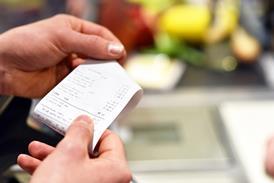
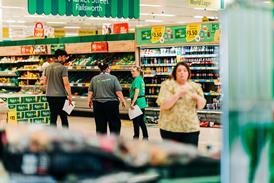

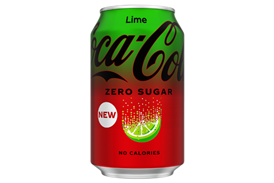
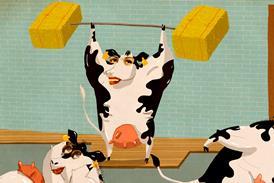


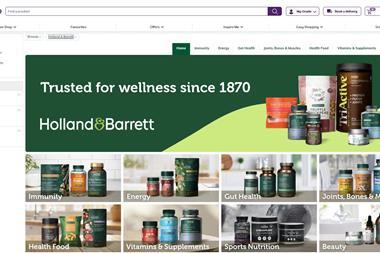
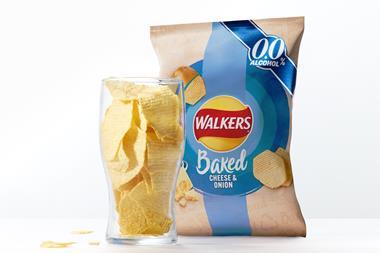
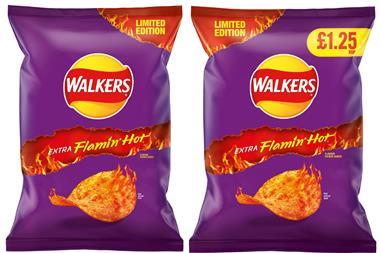


No comments yet